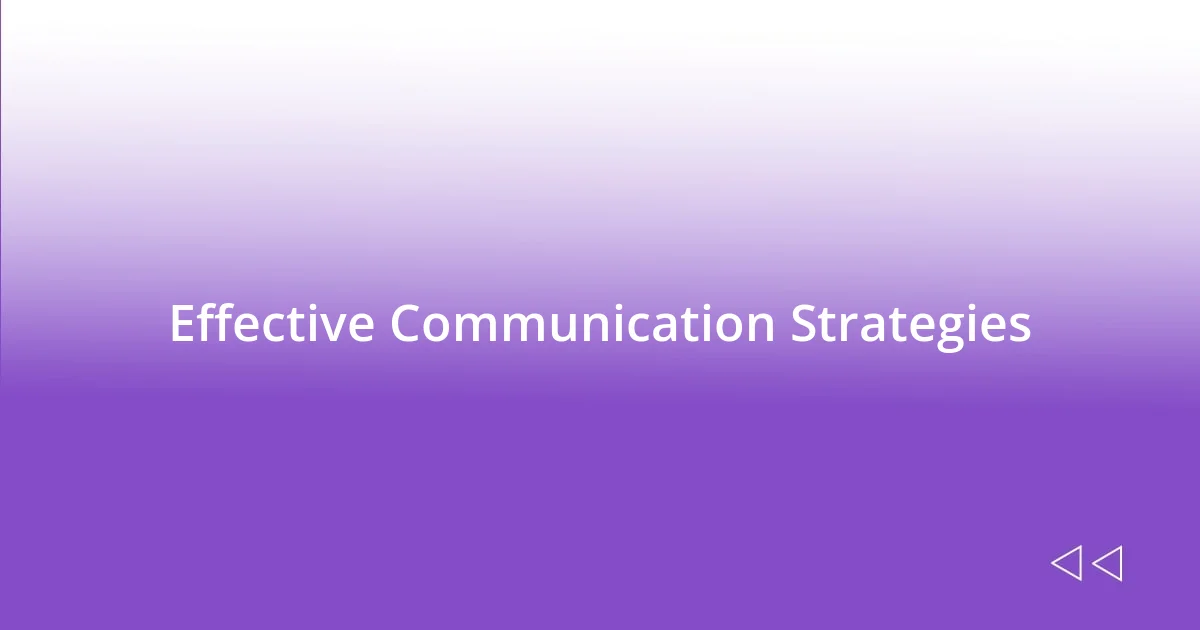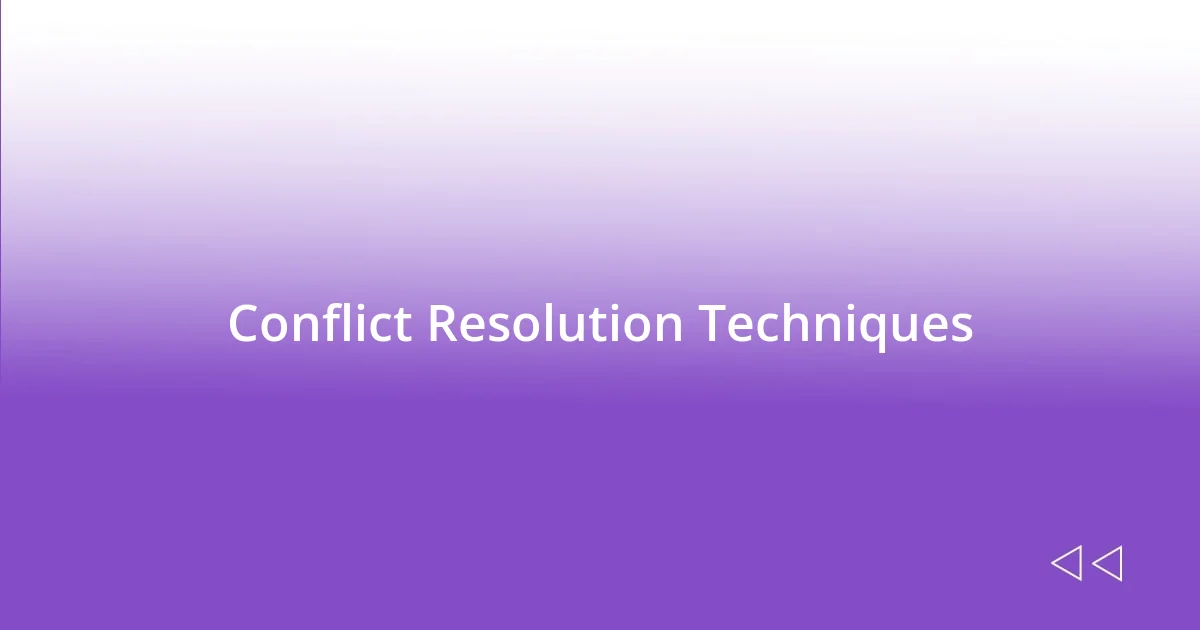Key takeaways:
- Collaboration sparks creativity and fosters community, enhancing teamwork through shared goals and open communication.
- Building trust is crucial, achieved through vulnerability, consistent communication, and celebrating achievements, which boosts morale and alignment.
- Embracing diverse perspectives fuels innovation, while effective conflict resolution techniques like interest-based approaches and mediation encourage constructive dialogue.

Understanding Collaboration Benefits
When I reflect on the benefits of collaboration, one thing stands out: the spark of creativity that emerges when diverse minds come together. I remember a project where I partnered with colleagues from different departments. Each person brought unique perspectives, and our brainstorming sessions felt electric, like we were all contributing pieces to a puzzle that none of us could complete in isolation. Isn’t it incredible how collaboration can turn ordinary ideas into extraordinary outcomes?
Beyond the creative aspect, collaboration inherently fosters a sense of community and belonging. I’ve often found that when we work together, sharing both the challenges and triumphs, our teamwork not only strengthens our bond but also builds trust. This environment allows for open communication, which I think is essential. Have you ever noticed how sharing a goal makes the journey feel less daunting? That shared purpose is invaluable.
Moreover, collaboration promotes a culture of learning and growth. Each time I engage with others, I discover new skills and insights that enhance my own understanding. For instance, while working in a recent cross-functional team, I learned about agile methodologies from a teammate, which I now integrate into my own projects. Isn’t it amazing how collaboration can enrich our professional toolkit?

Building Trust with Team Members
Building trust with team members is a fundamental aspect of collaboration that I deeply value. I remember a time when I was part of a team that faced significant setbacks. Instead of pointing fingers, we openly shared our concerns in a relaxed roundtable discussion. This vulnerability revealed that we were all navigating similar frustrations, which ultimately forged a stronger bond among us. Have you experienced the magic that happens when people let their guards down?
As I’ve gone further in my career, I’ve realized that consistent communication is key to building trust. In one instance, I set up weekly check-ins with a colleague to share project updates and openly discuss our feelings regarding the workload. It not only kept us aligned but also created a safe space where we could express our thoughts without fear of judgment. Isn’t it funny how just a small commitment of time can shift the dynamics of a relationship?
Another effective method I’ve found is acknowledging and celebrating each other’s achievements, no matter how small. I recall a project where a teammate went above and beyond to meet a deadline, and I took a moment to recognize and applaud their efforts in front of the team. The gratitude in their eyes was palpable, and it made everyone feel valued. In my experience, acknowledging hard work continually reinforces trust and morale within the team.
| Trust-Building Actions | Impact on Team Dynamics |
|---|---|
| Open Communication | Encourages vulnerability and honesty |
| Regular Check-ins | Fosters alignment and safety |
| Acknowledging Achievements | Reinforces value and commitment |

Effective Communication Strategies
Effective communication is the foundation of successful collaboration. I once worked on a project where open dialogue transformed our working dynamic. One of my colleagues initiated a “no judgement” zone during our meetings, which encouraged everyone to share ideas freely, no matter how unconventional. This approach not only ignited fresh concepts but also fostered an environment where every voice felt heard, and the sense of camaraderie flourished.
Here are some communication strategies that I’ve found invaluable:
- Active Listening: I’ve learned over time that genuinely listening to others can uncover hidden concerns and insights. A simple nod or follow-up question can go a long way.
- Use of Collaborative Tools: I’ve enjoyed platforms like Slack that make real-time conversations seamless. This accessibility keeps everyone in the loop, even when physical meetings are scarce.
- Frequent Feedback: After a recent team meeting, I took a minute to ask for feedback on my contributions. The openness led to valuable suggestions, strengthening our rapport and enhancing future meetings.
These strategies cultivate an atmosphere where collaboration can thrive, enabling everyone to contribute in meaningful ways.

Setting Clear Goals Together
Setting clear goals together is absolutely crucial for effective teamwork. In my experience, when we’ve gathered as a group to outline our objectives, it transforms our collective focus. I remember a time when my team used a whiteboard to brainstorm our goals for a marketing campaign. It was fascinating to see everyone’s ideas visualized. That moment of collaboration created a sense of ownership among all of us—doesn’t it feel great when everyone’s voice is valued?
During these sessions, I’ve found that using SMART criteria—Specific, Measurable, Achievable, Relevant, and Time-bound—can really clarify our intentions. For instance, while planning a project with a tight deadline, a teammate suggested we break our primary goal into smaller milestones. By doing this, we not only made the process less daunting but also celebrated small victories along the way. How often do you think we overlook the power of breaking things down?
Additionally, revisiting these goals regularly can keep the momentum alive. I recall a project where we set bi-weekly check-ins specifically for this purpose. Each time we met, we checked our progress and adjusted our approach if needed. This practice not only kept us aligned but also ignited our enthusiasm as we connected our ongoing efforts to the bigger picture. Isn’t it invigorating to see the tangible results of our hard work?

Embracing Diverse Perspectives
Embracing diverse perspectives is like unlocking a treasure trove of ideas. I still remember a brainstorming session where our team was composed of individuals from different cultural backgrounds. Each unique viewpoint brought something special to the table—whether it was a different solution to a problem or a creative twist on a project. Have you ever experienced that “aha” moment when someone’s distinct perspective shifts your entire understanding? It’s magical!
One thing I’ve quickly realized is that valuing diversity isn’t just about inclusion; it’s about harnessing that diversity to fuel innovation. During a recent project, a colleague with a background in sociology proposed an angle I hadn’t considered. By analyzing our target audience through a cultural lens, we were able to refine our messaging significantly. It made me think: how often do we dismiss unconventional ideas simply because they don’t align with our own experiences?
Listening to others’ opinions fosters a richer collaborative environment, and it’s amazing how it can change the atmosphere in a room. I once sat in a meeting where diverse voices not only sparked lively discussions but also built bridges of understanding among team members. It felt as if everyone was genuinely invested in each other’s contributions. How refreshing is it to be part of a group where differences are celebrated, rather than merely tolerated? This experience reinforced my belief that embracing diversity is essential for success in any collaborative effort.

Conflict Resolution Techniques
Conflict can often feel like a storm brewing, but having effective resolution techniques makes all the difference. I recall a particularly heated disagreement in a project meeting. Instead of letting emotions run high, we paused and went around the table, allowing everyone to voice their concerns. This simple act turned the tide for us. Isn’t it fascinating how just a little bit of space for everyone to share can diffuse tension and lead to mutual understanding?
Another technique I’ve found useful is the “interest-based” approach. Instead of focusing solely on positions—what each party demands—we explored underlying interests. I remember during one project where there was a clash over resource allocation; by shifting the conversation to what each of us needed to succeed, we discovered a compromise that worked for everyone. How often do we prioritize winning over truly understanding? It’s a powerful shift that leads to creative solutions.
Lastly, employing a neutral mediator can be a game changer when conflicts escalate. I once participated in a workshop where a skilled facilitator helped guide our discussions during a tough negotiation. Their ability to remain impartial and encourage open dialogue helped us navigate our differences effectively. Have you ever been in a situation where the right guidance made the impossible feel possible? I’ve come to realize that bringing in an unbiased perspective can transform conflict from a battle into a collaborative problem-solving journey.

Evaluating Collaboration Outcomes
Evaluating collaboration outcomes is crucial to understanding the effectiveness of teamwork. I often find myself reflecting on the success of a project through the feedback we gather. For instance, after completing a recent joint initiative, we sent out a survey to team members assessing what worked and what didn’t. Isn’t it enlightening to see how different perspectives can highlight areas for improvement that we might overlook?
One method I cherish is holding a post-mortem meeting where we discuss the project’s strengths and weaknesses. In one memorable debrief, we uncovered that timely communication was our biggest asset, yet we acknowledged that deadlines often fell short. Engaging in honest discussions like these can be refreshing, don’t you think? It creates an open forum for everyone to share their experiences and feelings, fostering a culture of transparency and growth.
I also keep an eye on measurable outcomes, such as project completion rates and team satisfaction levels. After a complex project last year, we noticed that our collective morale significantly improved, reflecting in our high-quality output. Have you ever considered how these metrics feed back into planning future collaborations? Understanding the tangible effects of our teamwork lets me make informed decisions in future projects, ensuring we continuously evolve and improve as a group.














